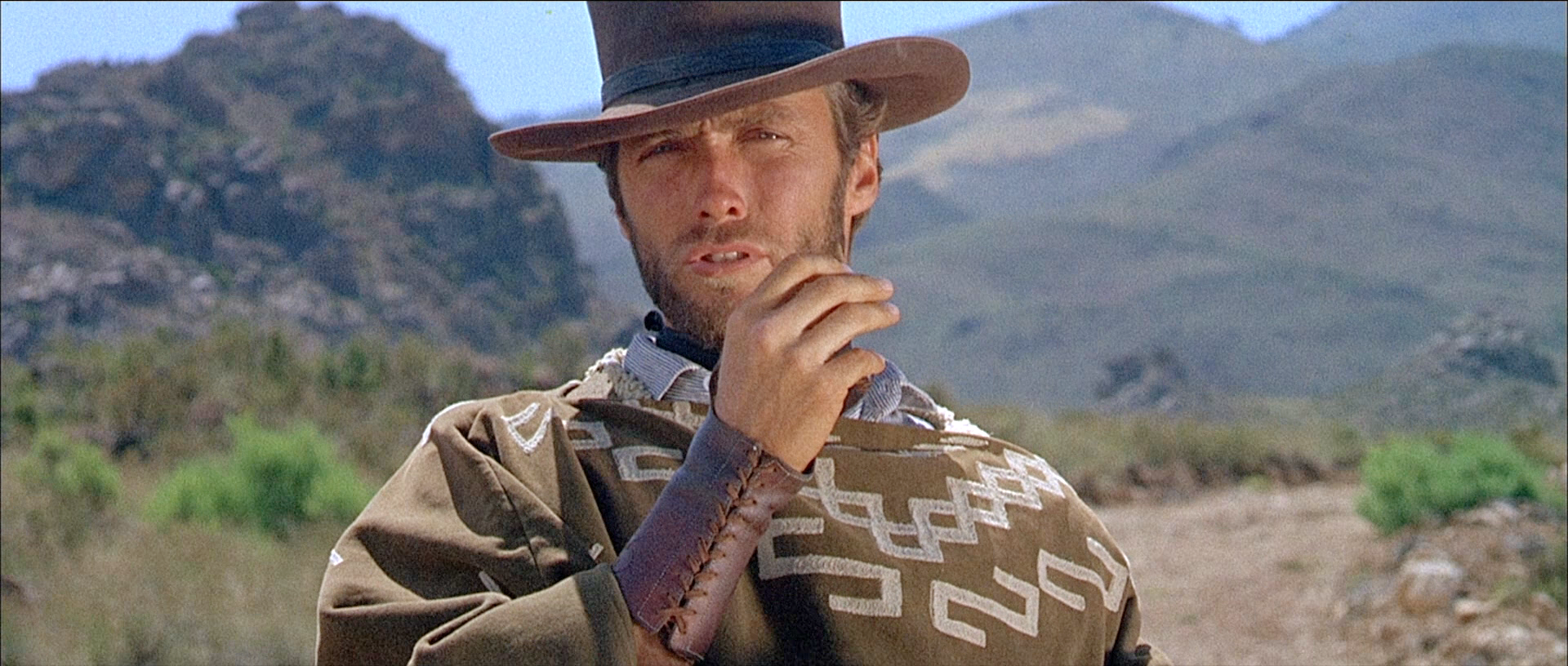Clint Eastwood’s poncho aficionado gunslinger is known by at least three different names in the Fistful Of Dollars trilogy, so why is he dubbed “The Man with No Name?” Eastwood was far from the first choice for the lead in The Magnificent Stranger – later retitled A Fistful Of Dollars – with bigger names like Henry Fonda and James Coburn passing. The screenplay already subverted the traditional image of the “heroic” cowboy, with Eastwood’s character being shown to shoot first and lie and cheat to achieve his goals.
Eastwood himself brought the final touch of trimming his dialogue to the bare minimum, which made his gunslinger more mysterious. Sergio Leone’s Dollars trilogy was hugely influential on futures Westerns, bringing a more violent, cynical edge with injections of dark humor to the genre. “The Man with No Name” is arguably the most iconic anti-hero in all of Western cinema, but it should be noted that the three films are only loosely connected. This might account for why the “Man With No Name” actually goes by several names throughout the series.
Clint Eastwood’s Man With No Name May Be Called Joe

The screenplay for A Fistful Of Dollars featured a brief opening scene that was later cut. It revealed Eastwood’s character was a Confederate sergeant named Ray, and he’s shown stealing his signature poncho. This was wisely dropped as having the “Man With No Name” suddenly appear with no backstory only added to his mystique. That said, one of the few friendships he forms in the story is with the local undertaker Piripero (Joseph Egger), who calls Eastwood’s protagonist “Joe.” Eastwood himself is also credited as “Joe” in a Fistful Of Dollars credits.
Why The Man With No Name May Not Be Called “Joe”

That said, Eastwood’s gunslinger never actually says his name is “Joe,” which is likely a nickname Piripero has given him in lieu of his actual name, as in “Regular Joe.” For A Few Dollars More and The Good, The Bad And The Ugly further suggest Joe isn’t his real name. In the former, he’s dubbed “Manco” by other characters. This is definitely a nickname and translates to “one-armed,” referring to his shooting style. In The Good, The Bad And The Ugly, Eli Wallach’s Tuco refers to him constantly as “Blondie,” in reference to his light hair.
“Joe” was almost certainly a placeholder for the character and it’s worth noting that Fistful Of Dollars blatantly copied Yojimbo by Akira Kurosawa. This Japanese samurai film sees a wandering ronin (Toshiro Mifune) arrive at a village caught between feuding gangs, and he plays both sides against one another for his own gain. A Fistful Of Dollars and Yojimbo share the same plot beats, and in the latter, Mifune’s ronin gives his name as “Kuwabatake Sanjuro,” which translates to “Mulberry field” and “30 years old”; this in reference to a nearby field and his actual age. Fistful Of Dollars no doubt “borrowed” this conceit from Kurosawa’s film too.
A Few Dollars More May Have Retconned Clint Eastwood’s Man With No Name

While the Dollars trilogy is only tangentially connected, it’s clear The Good, The Bad And The Ugly (which almost replaced Eastwood with Charles Bronson) was designed as a prequel. A key moment towards the finale sees Eastwood’s “Blondie” discover his trademark poncho, which he takes from a dead soldier. Whether “Joe” was ever intended by the filmmakers as the true name of Eastwood’s anti-hero was later retconned by For A Few Dollars More, where he’s only ever referred to as “Manco.” The concept of the “Man With No Name” was actually a creative piece of marketing by the trilogy’s American distributor, United Artists.
As a way to link the three Leone Westerns, the trailers and marketing referred to Eastwood’s loner as the “Man With No Name.” This gave a mythic quality to him, and even though this descriptor is never used in any of the Dollars films, it soon became the title viewers knew him as. It’s an archetype that the actor would revisit in some of his later Westerns too. His titular characters in High Plains Drifter and Pale Rider go by the names “The Stranger” and “The Preacher” respectively, with both projects adding a supernatural edge to the concept.
While not exactly a canonical appearance, an elderly version of the “Man With No Name” cameos in the animated comedy Rango. The cowboy is clearly modeled on Clint Eastwood but was voiced by Timothy Olyphant and is labeled “The Spirit of the West” in the movie. It’s ultimately up to viewers to decide if the “Man With No Name” is called Joe – or even Ray, as the unfilled Fistful Of Dollars opening dubbed him – but the creatives behind the saga preferred to reveal as little about him as humanly possible. Besides, the “Man With No Name” is FAR cooler a title.
